Click here to ediAfter six months in the field, give or take some trips to Italy’s heel and arch, I am starting to feel like this is “home,” or, at least, the place where I’ve “always” lived; it’s started to feel routine. Sundays, I take my dog to the sea, either up close the mountains, or down by the city, depending on where fieldwork takes me for that week. Monday nights, I attend my “coro polifonico” (choir) rehearsal, and then attend a special session to learn how to sing in the “cantu a cuncordu” style, with three other women and one other man (this is a style typically restricted to male voices). Tuesday nights, I attend my introductory Campidanese class, offered through a “circolo” (a sort of non-profit cultural association) that focuses on Sardinian language and cultural revitalization, where students from Mali, Uruguay, northern Italy and all over Sardinia come to learn to speak, read and write in Sardinian. Some are already “fluent,” others have passive speaking comprehension, and others (such as myself) know only the words we’ve learned in class so far. Wednesday nights, I’ve recently started a second course in Campidanese, this one focused on speaking, only, with a respected Sardinian novelist, world traveler and Sardinian language advocate, and Thursdays always take me back to Santu Lussurgiu for lessons with my teacher and the first female mayor of the village, a retired teacher, short story writer, and lover of language and poetry. Together, we speak, joke, go over new vocabulary lists (last week was the vast terminology for horses in the village, terms for weights of measurement and to talk about different sorts of wheat used in pasta, bread and elsewhere, and the very descriptive “sopranomi” (nicknames) associated with family names in the village). We also spend time reading a wide variety of poetry in Sardinian, including some incredible children’s poetry from students Franzisca taught, each poem a sort of mini-ethnography into village life from a child’s perspective.
Fridays, I do errands, visit with neighbors in the village, write or finish songs I’ve started with others, and on Saturdays, I typically am playing a show somewhere, either in Sardinia or on the “continente,” or I am trying to attend some event related to other components of my research related to relationships between Sardinian and mainland Italy, or Sardinian language-related events (for example, yesterday I documented a protest against NATO military bases on the island, and then saw an animated, Sardinian-produced documentary film about a flamingo (a bird very much associated with Sardinian and the city of Cagliari) at a film festival (the only of its kind) that features minoritarian languages around the world.
And then we’re back to Sunday, where I return to my new-found love, the sea, and the thing, surely, that keeps all Sardinians grounded and sane, a bit like how, it is said, central park in New York has always keeps New Yorkers sane in the midst of the city’s chaos: it’s refuge, it’s a space of decompression, a place to clear your thoughts, your heart, your mind.
Of all the things I feel most taken by, so far, it is the Sardinian language that has grabbed me the most. After six months, I’m finally beginning to be able to follow conversations. And I’m able to now sing in Sardu; speaking it still feels daunting and like something that will come in its own time, but not on my time schedule, necessary. So for now, I’m listening a lot, and uttering super simple phrases to gauge comprehension.
Fridays, I do errands, visit with neighbors in the village, write or finish songs I’ve started with others, and on Saturdays, I typically am playing a show somewhere, either in Sardinia or on the “continente,” or I am trying to attend some event related to other components of my research related to relationships between Sardinian and mainland Italy, or Sardinian language-related events (for example, yesterday I documented a protest against NATO military bases on the island, and then saw an animated, Sardinian-produced documentary film about a flamingo (a bird very much associated with Sardinian and the city of Cagliari) at a film festival (the only of its kind) that features minoritarian languages around the world.
And then we’re back to Sunday, where I return to my new-found love, the sea, and the thing, surely, that keeps all Sardinians grounded and sane, a bit like how, it is said, central park in New York has always keeps New Yorkers sane in the midst of the city’s chaos: it’s refuge, it’s a space of decompression, a place to clear your thoughts, your heart, your mind.
Of all the things I feel most taken by, so far, it is the Sardinian language that has grabbed me the most. After six months, I’m finally beginning to be able to follow conversations. And I’m able to now sing in Sardu; speaking it still feels daunting and like something that will come in its own time, but not on my time schedule, necessary. So for now, I’m listening a lot, and uttering super simple phrases to gauge comprehension.
Last Wednesday, I gave a work-in-progress research talk on my current research in Sardegna. For me, it was a sort of “here’s what I’m doing,” here’s what I’d like to be doing show-and-tell, where I got to field responses, in real time, of the projects—right now very much feeling like separate, disconnected pieces—that I’m currently working on in Sardegna.
It was also a powerful sort of initial full circle, from the time, three years ago, when I first visited this Mediterranean island, to now, where I’m now in the middle of a Fulbright year, supported by a second fieldwork grant from the Wenner-Gren foundation, on my sabbatical and living in a big, historic house on the main street at the beginning of the stretch of street where the horses run for the yearly carnival, teaching seminars and giving research lectures in the city of Cagliari, 1 ½ hours south but a universe away, and immersing myself in the study of the Sardinian language through the writing and performance of original songs, sung in Sardinian.
The audience at this presentation was also a microcosm of some of the many and diverse worlds I’ve come into contact with in Sardegna, thus far: my Sardinian language teacher (Campidanese) and a classmate, a fellow Fulbrighter and New Mexican compatriot hailing from Acoma Pueblo and reared, among other places, in various small “border” towns on the Navajo Nation, a former high school language teacher and Sardinian language advocate and self-taught ethnomusicologist, ethnomusicology students, collaborators and close colleagues, fellow “compaesani” from my adopted village of Santu Lussurgiu, guitarists and musicians, my dear friend Matteo (the first person I co-wrote a song with in Sardegna), and a group of around fifteen country music line dancers, each wearing a white western hat, invited to attend by their instructor, a Sardinian country music aficionado who also fronts an Outlaw country band called The Highwaymen (his dancers and fans are sometimes referred to as “Texardi,” a word fusing Texas with “Sardi,” the plural for Sardinian). Dancers, mostly Sardinians, also include one West Virginian, and retired defense force employee who decided to retire in Sardegna.
It was also a powerful sort of initial full circle, from the time, three years ago, when I first visited this Mediterranean island, to now, where I’m now in the middle of a Fulbright year, supported by a second fieldwork grant from the Wenner-Gren foundation, on my sabbatical and living in a big, historic house on the main street at the beginning of the stretch of street where the horses run for the yearly carnival, teaching seminars and giving research lectures in the city of Cagliari, 1 ½ hours south but a universe away, and immersing myself in the study of the Sardinian language through the writing and performance of original songs, sung in Sardinian.
The audience at this presentation was also a microcosm of some of the many and diverse worlds I’ve come into contact with in Sardegna, thus far: my Sardinian language teacher (Campidanese) and a classmate, a fellow Fulbrighter and New Mexican compatriot hailing from Acoma Pueblo and reared, among other places, in various small “border” towns on the Navajo Nation, a former high school language teacher and Sardinian language advocate and self-taught ethnomusicologist, ethnomusicology students, collaborators and close colleagues, fellow “compaesani” from my adopted village of Santu Lussurgiu, guitarists and musicians, my dear friend Matteo (the first person I co-wrote a song with in Sardegna), and a group of around fifteen country music line dancers, each wearing a white western hat, invited to attend by their instructor, a Sardinian country music aficionado who also fronts an Outlaw country band called The Highwaymen (his dancers and fans are sometimes referred to as “Texardi,” a word fusing Texas with “Sardi,” the plural for Sardinian). Dancers, mostly Sardinians, also include one West Virginian, and retired defense force employee who decided to retire in Sardegna.
I perform five songs, four in Sardinian, and one in English. The songs in Sardo are a mix of songs in Logudorese, the version of Sardinian spoken on the north part of the island (in this case, Lussorzesu, or the version of Logudorese spoken in Santu Lussurgiu) and in Campidanese, the more working-class identified version of Sardu spoken on the southern half of the island (the “Campidano” or the Plains) in and around the city of Cagliari. The first song, “Terra po’ Approdare” (A Place to Land), is a co-write with my Sardinian language teacher, and talks about my experience of living on the third floor of an enormous rented house with seven rooms in Santu Lussurgiu, surrounded by the history, photographs and sewing tools (my landlord’s mother was the village seamstress) of multiple generations of one family in the village. The second song, “Six Seconds,” is a translation of a song I originally wrote in English, with Swedish songwriter Maria Blom, and translated this fall into a version of Campidanese from the village of Assolo and done with a musician friend with a love for his language and a knack for songwriting. Since it’s a country song that talks about a female bull rider, I made the conscious choice to translate this song into a version of Campidanese “rustico” (Rustic Campidanese), where vowel sounds more closely approximate the diphthongs of the southern-inflected speech style I use when I perform this song, in English. This choice was also part of my own delving into the world of linguistic “transduction,” where I am trying to make country music sound as “country” as possible, but in the medium of another language, in this case, Sardinian.
The next song, “Lucinda,” is a love song dedicated to my (now-deceased) pickup truck, Lucinda, the truck I used to herd sheep and haul for many years when living on the Navajo Nation, and whose death affected me like the death of a beloved friend. Then we arrive at the co-write, “Tiria,” another country love song but this time a bluegrass love song for a now deceased grandmother, the musical muse and the person that taught my co-writer, Matteo Carta, how to speak in the Sardinian language. This is always a challenging song to sing: the melody in the verse and the chorus are almost identical, so it’s easy to mix up the chords between the verses and the chorus, but it’s also difficult to perform because I know how much it means to both of us. Matteo almost cries each time he sings it, and I hear this in his voice, particularly in the last, sotto voce verse he sings after the guitar solo, which then makes me want to cry; there is also a poignancy and a fragility with which Matteo, in his “cavernous” (as it’s described in Italian) baritone, sings this song that still, three years later, gives me goosebumps when I hear it. Shortly before we perform the song, we learn that one of the women in the room is the goddaughter of Matteo’s mother, and from the village that the song is named after, “Tiria,” making the delivery, and the poignancy of sense of place, even more powerful.
The next song, “Lucinda,” is a love song dedicated to my (now-deceased) pickup truck, Lucinda, the truck I used to herd sheep and haul for many years when living on the Navajo Nation, and whose death affected me like the death of a beloved friend. Then we arrive at the co-write, “Tiria,” another country love song but this time a bluegrass love song for a now deceased grandmother, the musical muse and the person that taught my co-writer, Matteo Carta, how to speak in the Sardinian language. This is always a challenging song to sing: the melody in the verse and the chorus are almost identical, so it’s easy to mix up the chords between the verses and the chorus, but it’s also difficult to perform because I know how much it means to both of us. Matteo almost cries each time he sings it, and I hear this in his voice, particularly in the last, sotto voce verse he sings after the guitar solo, which then makes me want to cry; there is also a poignancy and a fragility with which Matteo, in his “cavernous” (as it’s described in Italian) baritone, sings this song that still, three years later, gives me goosebumps when I hear it. Shortly before we perform the song, we learn that one of the women in the room is the goddaughter of Matteo’s mother, and from the village that the song is named after, “Tiria,” making the delivery, and the poignancy of sense of place, even more powerful.
And finally, we arrive at the final song, a song written with American songwriter Sonya Heller in English and French, and which now has a chorus that I also sing in Lussorzesu with a final phrase in French (“ce soir”), which goes: Nois tenimos/sas istorias nostras/lassate sos pistinghinzos fora s’aianna/ca custo sero/nudatteru nos importat/finzas chi sa manu tua/istringet sa mia/ce soir (“We all have our stories/leave your troubles at the door/because tonight, nothing else matters/long as my hand is in yours/ce soir”).
Responses to the songs, and to the presentation, are enthusiastic and result in wide variety of questions, from “do you use songs as the starting point or the end-point in your research process” to very general ones such as “what do Americans know about Sardinia” and “how do Navajos feel about white people,” but all of them grounded in a particular set of understandings about Sardinian identity, its colonial connections to a shared sense of history with Indigenous communities around the world, with what has been lost, and how what remains might be retained and reborn linguistically, politically, and culturally.
I’ll end with a very new and in-progress recording of a song recording reflecting my very first month's here, last summer, my own version of culture shock learning to navigate the steepest cobblestone streets I’ve ever seen, and trying to learn to make my peace with the intricacies of Italian bureaucracy, one day at a time. Buona giornata a tutti.
Responses to the songs, and to the presentation, are enthusiastic and result in wide variety of questions, from “do you use songs as the starting point or the end-point in your research process” to very general ones such as “what do Americans know about Sardinia” and “how do Navajos feel about white people,” but all of them grounded in a particular set of understandings about Sardinian identity, its colonial connections to a shared sense of history with Indigenous communities around the world, with what has been lost, and how what remains might be retained and reborn linguistically, politically, and culturally.
I’ll end with a very new and in-progress recording of a song recording reflecting my very first month's here, last summer, my own version of culture shock learning to navigate the steepest cobblestone streets I’ve ever seen, and trying to learn to make my peace with the intricacies of Italian bureaucracy, one day at a time. Buona giornata a tutti.
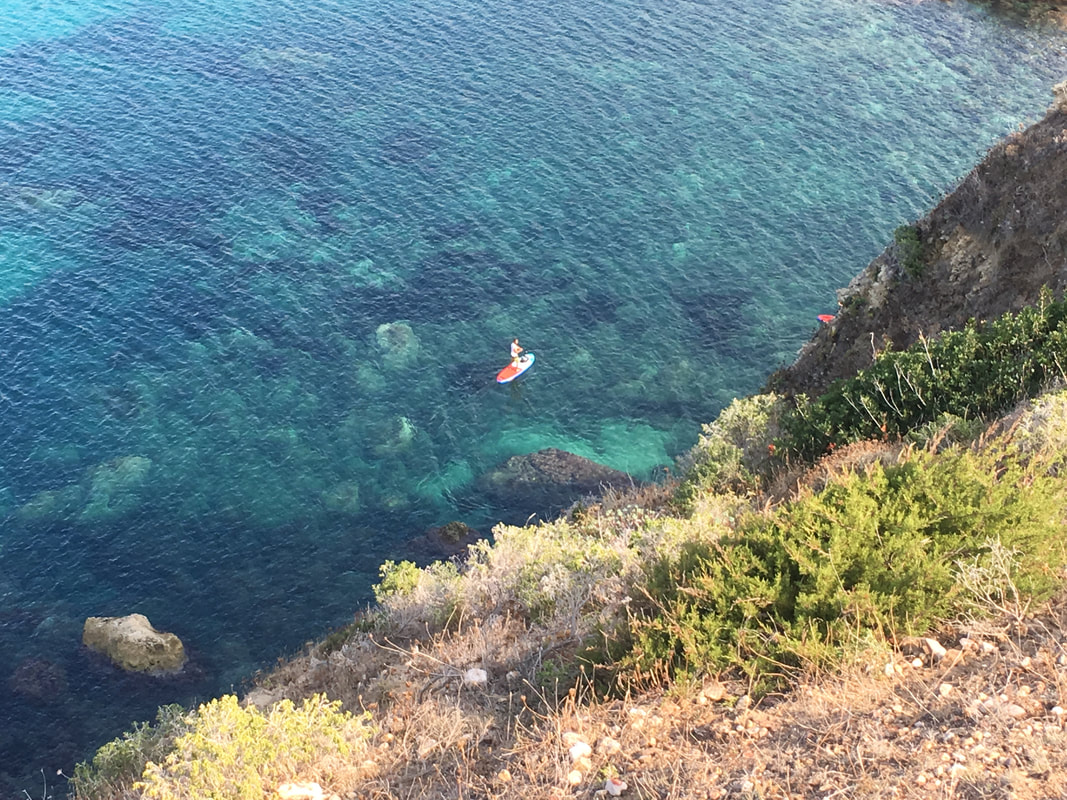
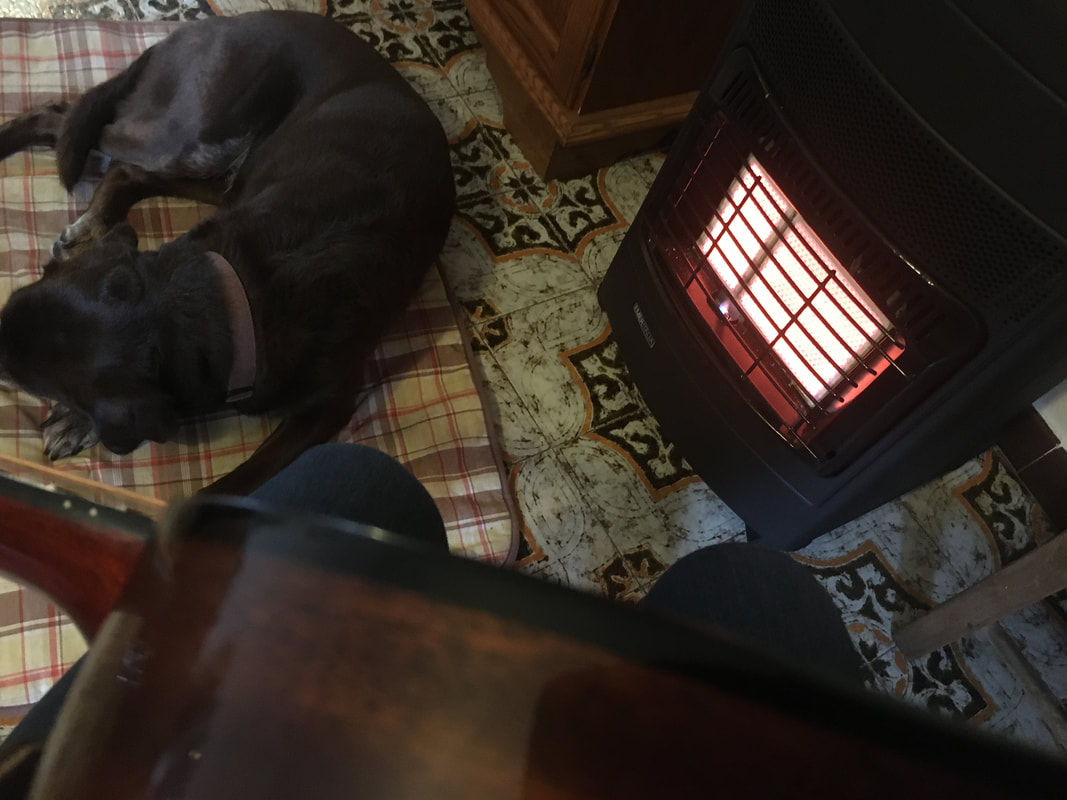
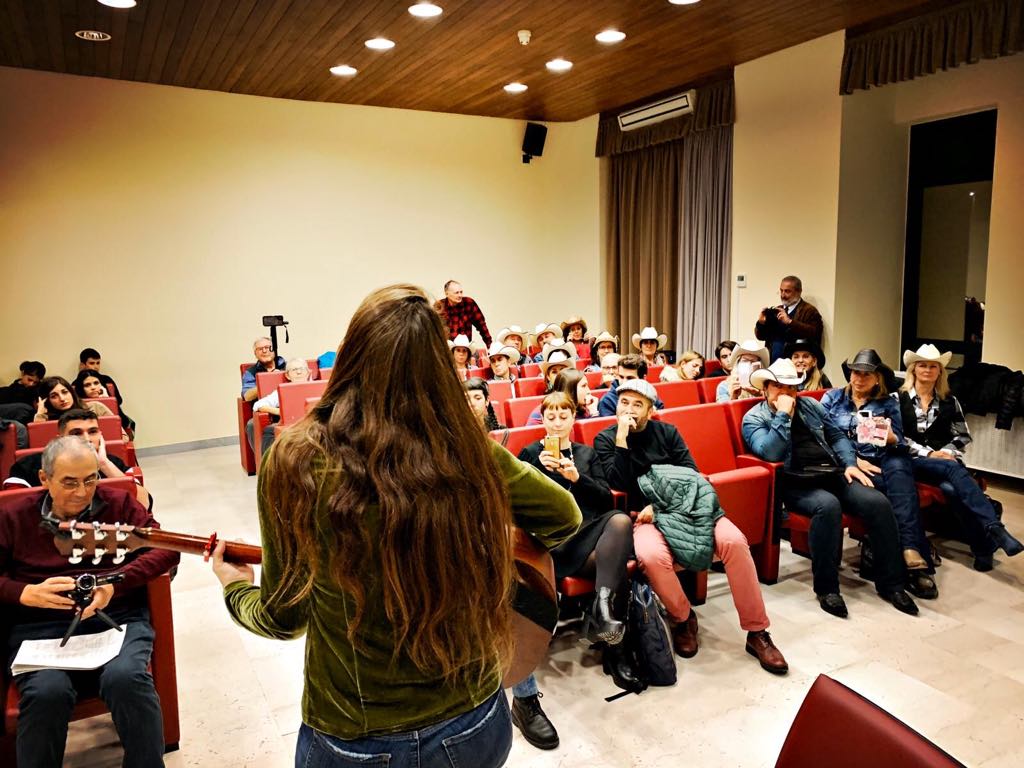
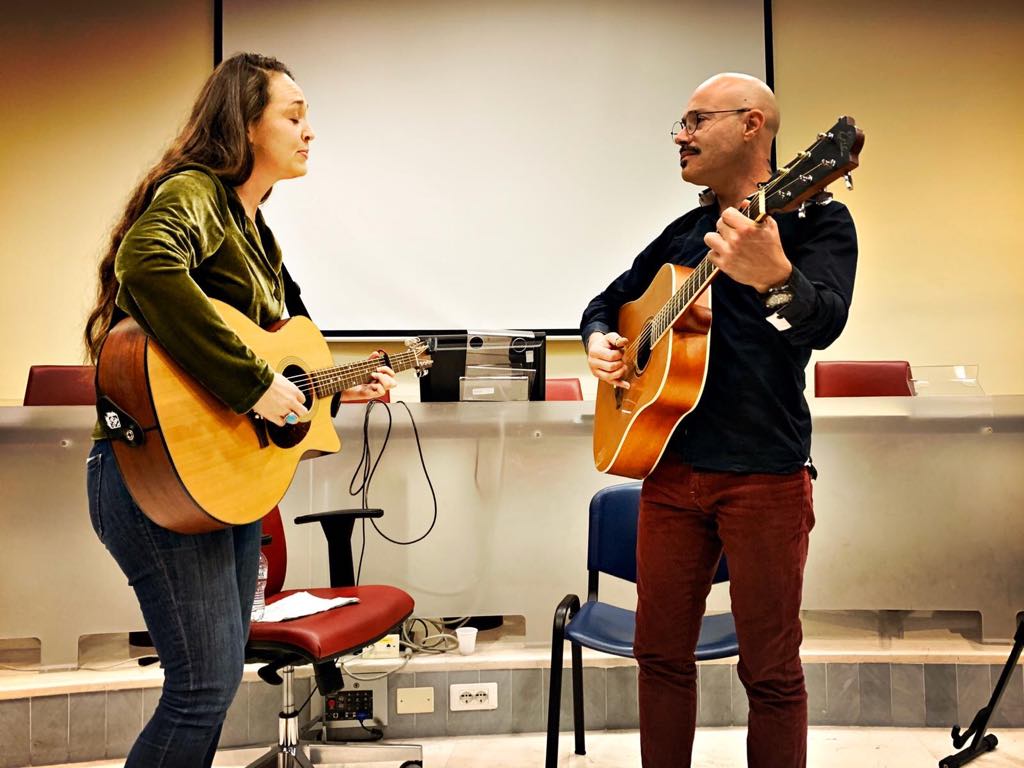
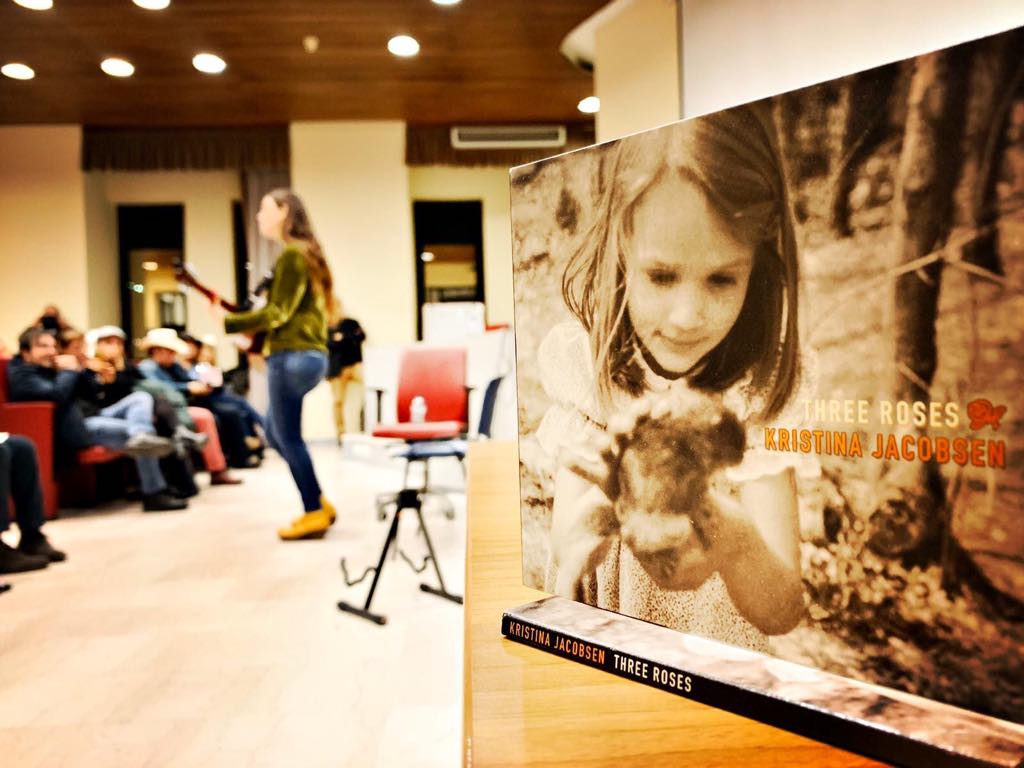
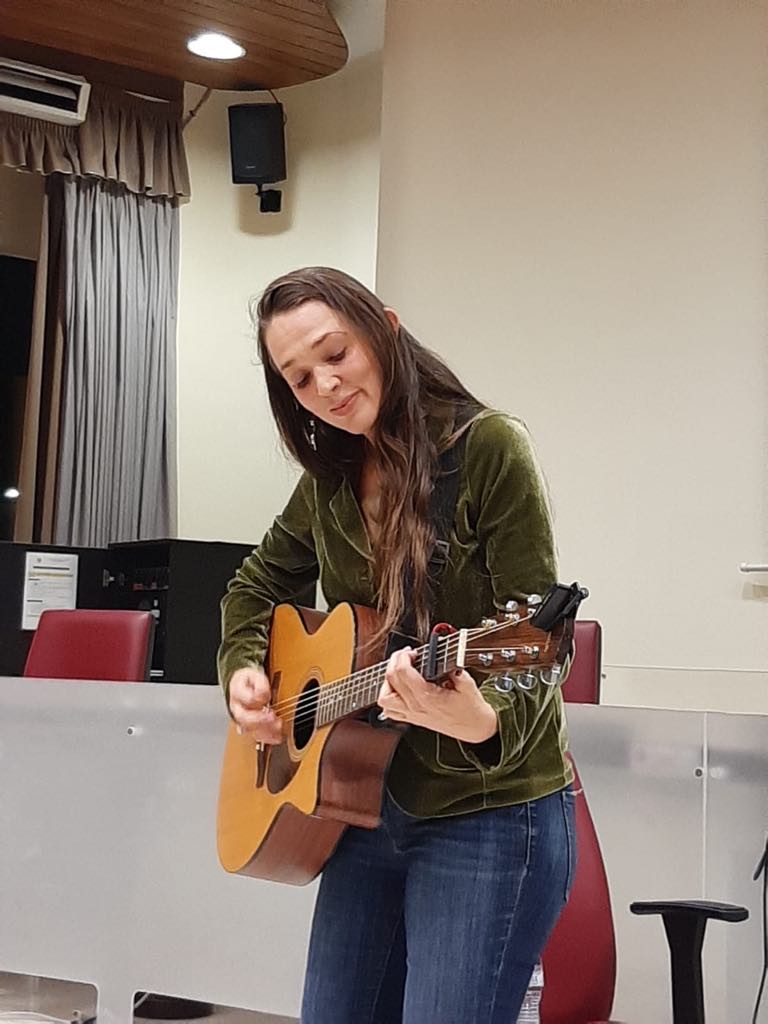
 RSS Feed
RSS Feed
